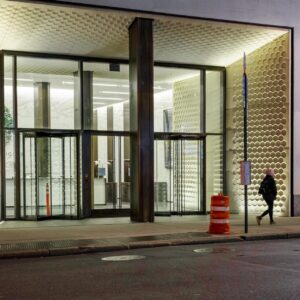I recently read one of those lifestyle articles in which the author reflects on life in New York City, the kind of substance-free article that is of interest only to navel-gazing New Yorkers, or those who imagine their lives would be more interesting if only they lived here. I usually skip these articles because anybody can write them but few can do it well. It is also true that your life does not become more interesting simply because you live it in New York. I shoot New York because it is where I am, not because it is inherently more interesting than anywhere else.
That said, this author made a partially reasonable observation in his piece. He noted, while walking through Manhattan, that every street vendor was selling very similar images, and everybody was selling photographs of the Flatiron Building. But then he went off the rails by suggesting that this made no sense. He suggested that the vendors should expand their offerings, and more importantly, differentiate, so that most vendors would not sell images of the Flatiron, as if some fool entertaining a casual thought knew more about the business of selling images on the street than the people who do it 10 hours each day.
A very smart man, G.K. Chesterton, once explained that if you cannot understand the purpose of something, you do better to assume that the person who created it knew more about the subject than you do, rather than assuming that the person who created it is a fool. So, in his example, if you see a fence blocking a public road, do not tear it down until you can figure out why it was put there in the first place:
Some person had some reason for thinking it would be a good thing for somebody. And until we know what the reason was, we really cannot judge whether the reason was reasonable. It is extremely probable that we have overlooked some whole aspect of the question, if something set up by human beings like ourselves seems to be entirely meaningless and mysterious. There are reformers who get over this difficulty by assuming that all their fathers were fools; but if that be so, we can only say that folly appears to be a hereditary disease. But the truth is that nobody has any business to destroy a social institution until he has really seen it as an historical institution. If he knows how it arose, and what purposes it was supposed to serve, he may really be able to say that they were bad purposes, that they have since become bad purposes, or that they are purposes which are no longer served. But if he simply stares at the thing as a senseless monstrosity that has somehow sprung up in his path, it is he and not the traditionalist who is suffering from an illusion.
(emphasis added)
Street vendors sell images of the Flatiron Building because people want to buy them, and if 95% of the street vendors in the city stopped selling them, they would simply be losing sales to the remaining 5% of those who continued to do so. And photographers such as me will continue to photograph this amazingly beautiful building simply because it is an amazingly beautiful building, even though thousands of photographers have already taken and published similar images. And I don’t even care if anybody wants to buy it.


Pingback: Tweets that mention Flatiron Building » Too Much Glass -- Topsy.com
John Sotiriou
20 Feb 2011How did I miss this one? Spectacular image and processing!
Pingback: Flatiron Redo - Too Much Glass » Too Much Glass